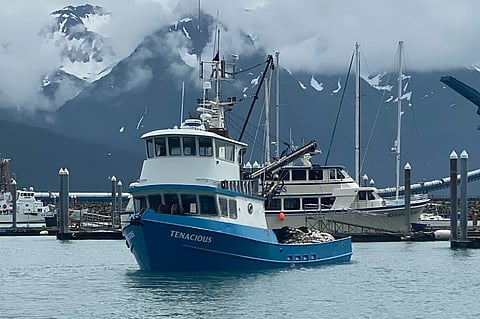

A captain's decision to get under way while fatigued led to the grounding and sinking of a fishing vessel near Whittier, Alaska, the National Transportation Safety Board (NTSB) said in Marine Investigation Report released on Tuesday, February 8.
On July 24, 2021, the purse seining vessel Tenacious, which fished primarily for pink salmon, ran aground at the entrance to Wells Passage while transiting to fishing grounds in Prince William Sound. The five crewmembers abandoned the vessel and were rescued.
Tenacious later sank. One minor injury was reported.
The NTSB said loss of the vessel and fishing gear totaled US$660,000 and the 2,000 gallons (7,570 litres) of diesel fuel on board were not recovered.
Tenacious' crew arrived in Whittier late on July 22 to resolve maintenance issues with their skiff ahead of the opening of the fishery on July 24. Three of the crew made a four-hour round trip to Seward, Alaska to borrow another skiff.
According to a deckhand, the whole crew was running off "not too much sleep."
About two hours after getting under way for the July 24 fishery, Tenacious struck rocks. The captain later told investigators he fell asleep.
The vessel began to take on water and efforts to stop the flooding were unsuccessful. The crew boarded the skiff and were rescued by the fishing vessel Wildlife.
The NTSB determined the probable cause of the grounding was the captain's decision to get under way while fatigued.
Contributing was the decision not to use the navigation system's cross track error alarm and to operate with a non-functioning bridge watch alarm.
"Even though captains face economic pressures, operating vessels while fatigued can be dangerous," said Morgan Turrell, director of NTSB's Office of Marine Safety. "The crew of Tenacious was fortunate no one was injured; others have not been so fortunate. Owners/operators should ensure crewmembers receive enough rest to adequately perform duties."
There were two tools that could have prevented the grounding:
Additionally, Tenacious was not required by regulations to have watertight bulkheads; however, had the bulkhead between the bunkroom and the engine room been watertight, it would have contained the flooding.
Improving fishing vessel safety remains a priority for the NTSB and it is an issue on the NTSB's 2021-2022 Most Wanted List of Transportation Safety Improvements. The NTSB advocates for new standards to address – and periodically reassess – intact stability, subdivision, and watertight integrity in commercial fishing vessels up to 79 feet (24 metres) long.
